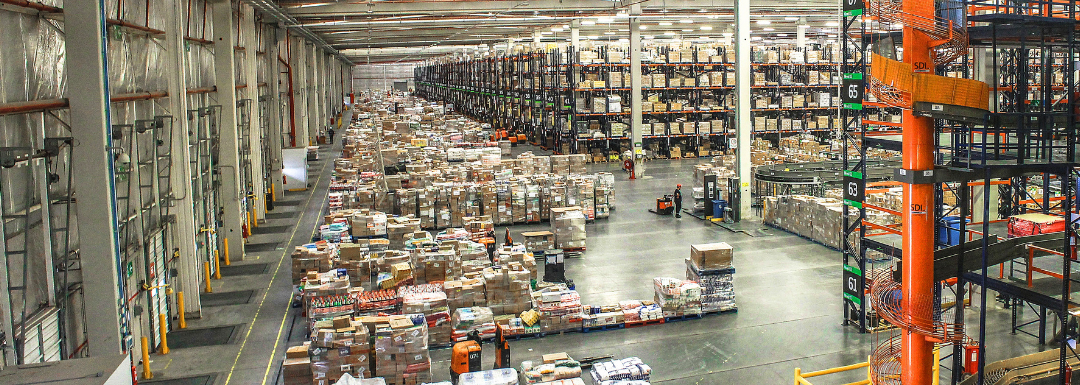The warehouse and distribution industry is the cornerstone of modern commerce, supporting supply chains that keep businesses running and customers satisfied. As this sector continues to evolve, the need for efficiency, accuracy, and adaptability becomes ever more critical. Implementing a Warehouse Management System (WMS) is a powerful way for companies to streamline operations, improve inventory accuracy, and scale their business to meet growing demands.
Why a WMS is Essential for Warehouse and Distribution Operations
A WMS is a software solution designed to optimise warehouse operations. From inventory tracking to order fulfilment, it enables businesses to manage their warehouses with precision and agility. Here are some key benefits:
- Enhanced Inventory Visibility: A WMS provides real-time data on inventory levels, ensuring businesses know exactly what’s in stock and where it’s located.
- Improved Accuracy: By automating processes like picking and packing, a WMS reduces errors, leading to higher customer satisfaction.
- Operational Efficiency: Streamlined workflows and optimised labour management ensure faster and more efficient operations.
- Scalability: A WMS grows with your business, handling increased order volumes and warehouse expansions seamlessly.
Steps to Successfully Implement a WMS
Implementing a WMS is a strategic move that requires careful planning and execution. Here are the steps to ensure a smooth transition:
- Assess Business Needs
Before selecting a WMS, evaluate your current operations. Identify pain points, such as inaccurate inventory tracking, slow order fulfilment, or high labour costs. Understanding your specific challenges will guide you in choosing the right solution.
- Select the Right WMS
Not all WMS solutions are created equal. Look for a system that aligns with your business size, industry requirements, and growth goals. Key features to consider include:
- Real-time inventory tracking
- Integration capabilities with ERP and e-commerce platforms
- Scalability for future expansion
- User-friendly interfaces
- Plan the Implementation Process
Develop a detailed implementation plan that outlines:
- Timelines and milestones
- Budget considerations
- Stakeholder responsibilities
- Hardware and software requirements
- Train Your Team
Proper training is critical for the success of a WMS. Provide hands-on training sessions to ensure your staff understands how to use the system effectively. Encourage feedback and address any concerns early.
- Test the System
Before going live, conduct thorough testing. Simulate real-world scenarios to ensure the system functions as expected. Identify and resolve any issues to minimize disruptions during the rollout.
- Migrate Your Stock and Master Data
Before transitioning to the new system, ensure all stock and master data is accurately migrated. This step involves:
- Cleaning existing data to remove duplicates or errors.
- Structuring data in a format compatible with the WMS.
- Validating the accuracy of migrated data to avoid discrepancies during operations.
Properly migrated data ensures that the WMS operates efficiently and aligns with the actual warehouse inventory.
- Go Live and Monitor Performance
Once testing is complete, launch the WMS. Monitor its performance closely during the initial phase and be prepared to make adjustments as needed. Use analytics tools to measure key performance indicators (KPIs) such as order accuracy, inventory turnover, and labour efficiency.
Challenges in WMS Implementation
While a WMS offers numerous benefits, implementation can come with challenges:
- Integration Complexity: Ensuring seamless integration with existing systems can be time-consuming.
- Change Management: Resistance from employees unfamiliar with the system may slow adoption.
- Cost: Upfront costs for software, hardware, and training can be significant.
- Customisation Needs: Adapting the WMS to unique workflows may require additional time and resources.
Overcoming these challenges requires collaboration, clear communication, and support from both internal teams and the WMS vendor.
The Future of Warehousing with a WMS
As technology continues to advance, WMS solutions are becoming smarter and more adaptable. Features like artificial intelligence, machine learning, and robotics integration are transforming warehouse operations, enabling businesses to stay competitive in a fast-paced market.
By implementing a WMS, companies in the warehouse and distribution industry can achieve new levels of efficiency and accuracy. This investment not only addresses current operational challenges but also prepares businesses for future growth and innovation.
Partner with THINK Inventory Solutions
At THINK Inventory Solutions, we specialise in helping businesses implement cutting-edge warehouse management systems tailored to their needs. Our solutions empower companies to optimise operations, enhance inventory control, and deliver exceptional customer service.
Are you worried that a warehouse management solution will be too expensive, or that you will be trapped in a long contract? To arrange a demo or discuss your requirements, give THINK a call on 0330 350 0715, email enquiries@tkinv.com or complete the Quick Quote form below. We can work with your business to help save you money and drive down costs.


Recent Comments